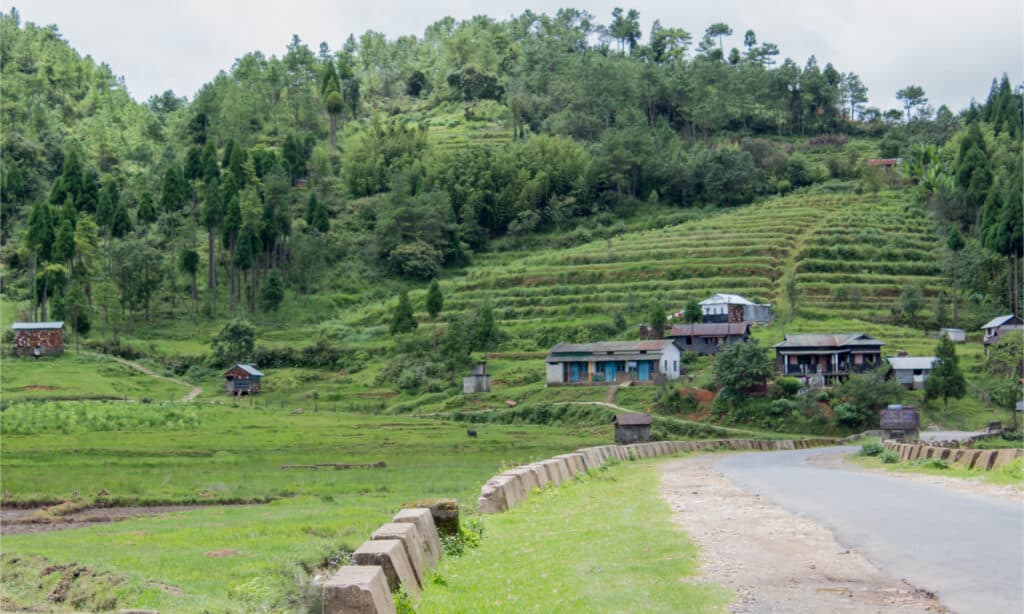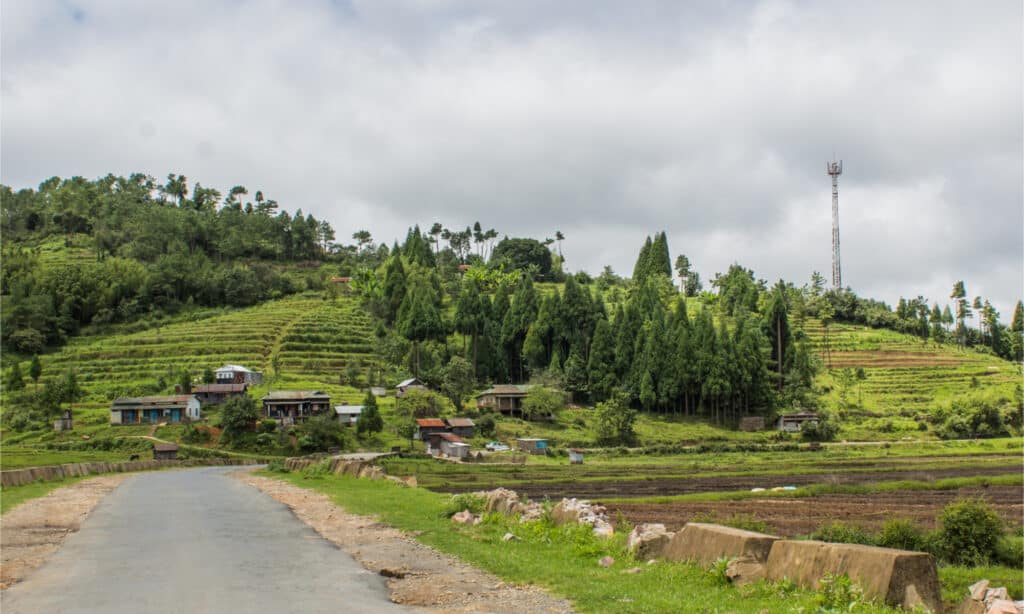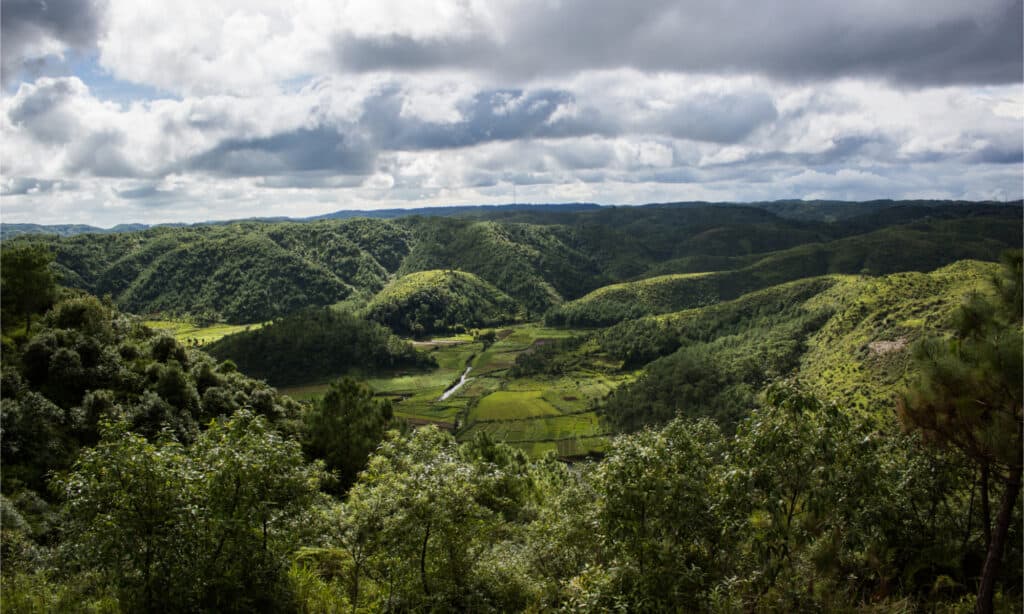When we say “wettest place,” it automatically conjures images of a country where rain falls continuously throughout the day and where the clouds never leave the sky. However, such a place is not only possible in fairytales. There is indeed a place where rain seldom stops, and people would never leave without an umbrella. So, what could be the wettest place on Earth, and how much rain does it receive?
The wettest spots on the planet are determined by how much precipitation they receive in various forms such as rain, snow, fog, and drizzle. Wind patterns, temperatures, land topography, latitudes, closeness to water bodies, and other factors influence precipitation frequency. While most people avoid traveling during the rainy season, it does provide opportunities to encounter unique experiences that are only accessible during the rainy season. In this article, you will discover the wettest place on Earth, how it gets too much rain, and other fascinating facts.
What is the Wettest Place on Earth?

The wettest place in the world is the village of Mawsynram in India.
©UniS/Shutterstock.com
Wondering what might be the wettest place on the planet? We’ll give you a hint: it is located in a known tropical country — India. According to Guinness World Records, the village of Mawsynram in northeastern India has the most average annual rainfall, with 11,871 millimeters or 467 inches (39 feet) of rain per year. Mawsynram experienced 26,000 millimeters (1,000 in) of rain in 1985. On August 19, 2015, Mawsynram recorded 745.2 millimeters (30 inches) of rain, the town’s greatest one-day rainfall total to date. During rainy days (which are often), villagers in Mawsynram utilize grass to soundproof their houses from the thunderous rain that pelts their residences.
Mawsynram is located in the Khasi Hills in Meghalaya, India, precisely in the path of warm, moist air blown in from the Bay of Bengal. The monsoon season, which lasts from April to October annually, brings most of Mawsynram’s rain. It may be surprising to discover that India hosts the place with the most rainfall, considering that the country is generally hot and tropical. The country sports a tropical climate for the most part, with a mix of wet and dry tropical weather over most of the year. A humid tropical climate prevails north, while wet tropical zones dot the western coast. India saw record temperatures in March 2022, giving it its hottest months in 122 years. According to scientists, the higher temperatures in India are due to the accumulation of greenhouse gases in the atmosphere.
What Causes Too Much Rain in Mawsynram?

Mawsynram’s closeness to the Bay Bengal is one of the major causes of a lot of rain in its region.
©UniS/Shutterstock.com
The proximity of Mawsynram to the Bay of Bengal is one of the critical causes of its precipitation. The mountains drive the warm, moist monsoon winds from the Bay of Bengal to converge in Mawsynram, resulting in the world’s highest rainfall level. Surprisingly, the region’s altitude, apart from the monsoon, contributes to the high rainfall. When mounds of warm air come into contact with the Khasi Hills, they condense and pour as rain. The region’s terrain causes the very moist clouds to rise and fall, pushing them to dump their collected water over the area.
Numerous rivers and waterfalls abound in the world’s wettest area. Mawsynram locals have adapted to the rainy climate by creating reed coverings when farming. Often known as the Abode of the Clouds, Meghalaya is home to numerous natural wonders, including waterfalls and living root bridges.
The wettest area on Earth has been known to shift throughout time based on rainfall. While Mawsynram now holds the title, it is frequently in competition with Cherrapunjee, about 9.3 miles to the west of Mawsynram in the East Khasi Hills area of northeastern India. Cherrapunjee’s average annual rainfall is 11,777 mm (463.7 in).
What Beauty Does the World’s Wettest Place Hold?

Mawsynram is home to beautiful landscapes.
©UniS/Shutterstock.com
Despite the region’s notorious reputation, it is home to wondrous landscapes and is a well-known tourist spot. Mawsynram is known for its cascading waterfalls, unrelenting rain, and valleys blanketed in lush foliage.
The region is rich in vegetation and animals, and you can expect to be surprised with unanticipated rain at any time of year. Touring this region is an adventure in and of itself for any traveler seeking unique experiences. Mawsynram is, without a doubt, one of the best monsoon destinations to visit.
Even though Cherrapunji competes as the wettest area in the country, Mawsynram’s beauty is unrivaled. Because the distance between Cherrapunji and Mawsynram is only 8 miles, both sites have a lot in common regarding natural vegetation, climate, and geography.
How is Rainfall Measured?
A rain gauge measures the amount of rain that falls, usually expressed in millimeters (mm). Precipitation per square meter area is computed using the rain gauge, and it is observed over time to determine the amount of rainfall in a specific region.
According to annual data from the Meteorological Department, India’s average precipitation is 46.5 inches. The mean quantity of moisture falling as rain and snow in the United States, on the other hand, excluding Hawaii and Alaska, is 30.21 inches (767 millimeters).
What Other Places Have the Highest Rainfall?
There are numerous other places on the planet that receive more than a meter (3.28 feet) of yearly precipitation than northeastern India. For example, the hamlet of Tutunendo in Colombia receives an average annual rainfall of 11,770 mm (463.38 in). Because the area has two rainy seasons per year, rain is generally expected.
Other places that rank as the world’s wettest places include Cherrapunji, another region in Meghalaya State, India. Others are Cropp River in New Zealand, with an average annual precipitation of 11,516 mm, and San Antonio de Ureca in Equatorial Guinea, which receives an average of 10,450 mm of rain every year. A place in Africa, Debundscha in Cameroon, also makes it to the list, despite the continent’s generally dry climate. The region receives 10,299 mm of rainfall every year and is the highest peak on the continent.
Where Is Mawsynram Located on a Map?
The village of Mawsynram in northeastern India. It is located in the Khasi Hills in Meghalaya, and in close proximity to the Bay of Bengal. Often known as the Abode of the Clouds, Meghalaya is home to numerous natural wonders, including waterfalls and living root bridges.
The photo featured at the top of this post is © UniS/Shutterstock.com
Thank you for reading! Have some feedback for us? Contact the AZ Animals editorial team.






